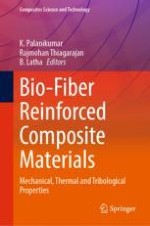This book provides an overview on the latest technology and applications of bio-based fiber composite materials. It covers the mechanical and thermal properties of bio-fibers for polymeric resins and explains the different pre-treatment methods used by the researchers for the enhancement. In addition, this book also presents a complete analysis on the tribological behavior of bio-fiber reinforced polymer composites to appreciate the friction and wear behavior. This book would be a handy to the industrial practitioners and researchers in the direction of achieving optimum design for the components made of natural fiber based polymer matrix composites.
